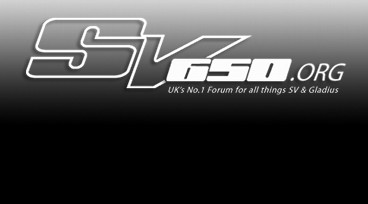
 |
Guitar-ists - Power chord help please
As I mentioned before I recieved an electric guitar for xmas.
xmas morning I also got a "Fender Presents getting started on electric guitar with keith wyatt" DVD AND A book by jamie humphries called "crash course - electric guitar" (this book is in the smt range which i have a lot of such as remixing, balancing, advanced music production etc etc so have use them before and as a rule they tend to be good). now then... ive been using the DVD since xmas, only a few times but i can now play 3 power chords along with the backing track and do it well. E5, A5 and D5 so on the DVD it says the E5 power chord is as follows open low E string (6th) and hold the 5th and 4th strings on the 2nd fret and play the 3 strings. same with the A5 and D5, on the dvd it shows one open string, 2 strings on whatever frets and playing 3 strings. so last night i had a quick look at the book for the first time. it shows the power chords, same ones, as having one open string, one fretted string and only playing the 2 strings. eg the book says E5 is:- open low E string (6th), the 5th string on the 2nd fret, and play the 2 strings. so which is right?? having contradicting learning tools is rather annoying!, |
Re: Guitar-ists - Power chord help please
Both are right. The 3 string version will give you a fuller sounding chord by adding another root note (1 octave higher).
|
Re: Guitar-ists - Power chord help please
Quote:
|
Re: Guitar-ists - Power chord help please
ah ok, so no hard and fast rules excellent, ill stick with the 3 string version as it seems more involved and sounds better.
i didnt want to learn one way then find out later on what i thought i knew was actually all wrong (the theory part anyways) thanks for your help chaps |
Re: Guitar-ists - Power chord help please
E5 power chord you can play in any way, all that you can't do is make the chord a major or a minor by adding a 3rd in there. Power chords are root notes plus 5ths.
|
Re: Guitar-ists - Power chord help please
Quote:
|
Re: Guitar-ists - Power chord help please
And if you add the 1st fret on the 4th string (in the chord of E in this case) you with get Emaj5 :) I think that's what its called but you get a Major Chords anyways
|
Re: Guitar-ists - Power chord help please
Quote:
|
Re: Guitar-ists - Power chord help please
Emaj5? its just an E major. Root, fifth, octave, 3rd (octave up).
Does the 5 signify the first note after the root? So a proper Emaj would be like its played on a piano? |
Re: Guitar-ists - Power chord help please
I don't think there's an Emaj5.
A chord is normally made of three notes- the root, the third and the fifth. A power chord is normally made of just the root and the fifth. The third of the note (G or G sharp in this case) that would make it a minor or major chord is missing. So it would be just written E5. Technically, it's not a chord because it is only made of 2 notes, even when the octave is added above to give it more power. Having written that, I think that some people term a power chord as a chord that's played across every string of the guitar for added...er...power, though the term commonly refers to the paragraph above. Great for rock and roll, rock or metal chugging! In the key of E , the harmonic changes (ie raising or lowering) of each note in the scale are as follows- Major or minor second (F sharp or F) Major or minor third (G sharp or G) - Perfect or augmented fourth (A or A sharp) Perfect or diminished fifth (B or B flat) Major or minor sixth (C sharp or C) Major or minor seventh (D sharp or D). There is an Emaj7- this is simply an E chord with a major seventh- it refers to the 7th note, rather than the major/minor tonality of the chord itself. So an E major chord with a minor seventh would be written as just E7. You can have a minor chord with a major 7th and it would be written Em maj7 After that you 'add' a note the octave up- so Add9 would be the F sharp the next octave above the chord being played. So if you play an E add 9, you would be playing (on a piano) E G sharp B and F sharp in ascending order. If the G sharp is not played in the middle of the chord (making it major or minor), it might become a suspended chord- the F sharp would the suspended note- if it resolves up to G sharp, it becomes a major chord again. I hope this helps. |
| All times are GMT. The time now is 03:25 AM. |
Powered by vBulletin® - Copyright ©2000 - 2025, Jelsoft Enterprises Ltd.